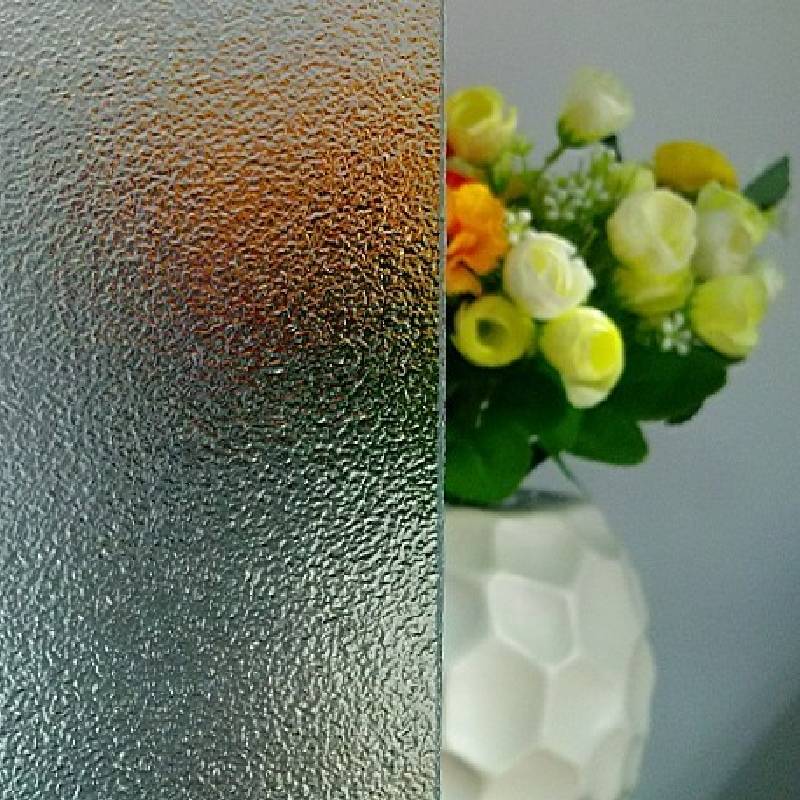The Aesthetic and Functional Benefits of Decorative Laminated Glass
In contemporary architecture and design, materials play a pivotal role in both aesthetics and functionality. One such material that has been gaining popularity is decorative laminated glass. This innovative construction material not only enhances the visual appeal of spaces but also provides safety, durability, and versatility, making it an excellent choice for various applications.
Understanding Decorative Laminated Glass
Laminated glass is made by sandwiching a layer of interlayer material, often made of polyvinyl butyral (PVB) or ethylene-vinyl acetate (EVA), between two or more layers of glass. This process not only binds the glass together but also allows for the incorporation of decorative elements, making the glass visually striking. Decorative laminated glass can include intricate patterns, colored interlayers, or even printed designs, tailoring the product to meet specific aesthetic requirements.
Aesthetic Appeal
One of the most compelling reasons for choosing decorative laminated glass is its ability to enhance the overall aesthetic of a space
. With countless design possibilities, this type of glass can be customized to fit any design scheme, whether it is for a residential or commercial space. Architects and designers can explore a variety of colors, patterns, and textures, allowing them to create unique environments that reflect their vision and style.
Incorporating decorative laminated glass into walls, partitions, and windows can create stunning focal points. For instance, a colorful laminated glass panel can serve as a beautiful backdrop in an office setting or as a vivid partition in a retail space. The playful interplay of light, thanks to the transparency and translucency of the glass, adds depth and visual interest to otherwise mundane spaces.
decorative laminated glass
Functional Advantages
Beyond its aesthetic benefits, decorative laminated glass offers numerous functional advantages. One of the primary features is its safety. The interlayer in laminated glass helps hold shattered glass fragments together, significantly reducing the risk of injury in the event of breakage. This safety feature makes it an excellent choice for buildings in high-traffic areas or where safety is a concern, such as schools, hospitals, and public institutions.
Moreover, laminated glass provides enhanced sound insulation compared to regular glass. The interlayer acts as a sound barrier, absorbing noise and creating a more comfortable environment. This feature is particularly beneficial in urban settings, where noise pollution can be a significant issue.
Energy efficiency is another important consideration in today’s design landscape. Decorative laminated glass can be treated with low-emissivity (low-E) coatings to improve thermal performance. This means buildings can maintain comfortable indoor temperatures while reducing energy costs, thereby contributing to sustainability efforts.
Conclusion
In conclusion, decorative laminated glass represents a perfect blend of form and function. Its ability to transform spaces while providing safety, sound insulation, and energy efficiency makes it a valuable choice for both architects and designers. As the demand for innovative building materials continues to grow, decorative laminated glass stands out as an exemplary solution that meets the modern aesthetic and practical needs of today’s architectural landscape. Whether used in residential homes, commercial buildings, or public spaces, decorative laminated glass is poised to make a lasting impact on the world of design, marrying creativity with functionality.
 Afrikaans
Afrikaans  Albanian
Albanian  Amharic
Amharic  Arabic
Arabic  Armenian
Armenian  Azerbaijani
Azerbaijani  Basque
Basque  Belarusian
Belarusian  Bengali
Bengali  Bosnian
Bosnian  Bulgarian
Bulgarian  Catalan
Catalan  Cebuano
Cebuano  Corsican
Corsican  Croatian
Croatian  Czech
Czech  Danish
Danish  Dutch
Dutch  English
English  Esperanto
Esperanto  Estonian
Estonian  Finnish
Finnish  French
French  Frisian
Frisian  Galician
Galician  Georgian
Georgian  German
German  Greek
Greek  Gujarati
Gujarati  Haitian Creole
Haitian Creole  hausa
hausa  hawaiian
hawaiian  Hebrew
Hebrew  Hindi
Hindi  Miao
Miao  Hungarian
Hungarian  Icelandic
Icelandic  igbo
igbo  Indonesian
Indonesian  irish
irish  Italian
Italian  Japanese
Japanese  Javanese
Javanese  Kannada
Kannada  kazakh
kazakh  Khmer
Khmer  Rwandese
Rwandese  Korean
Korean  Kurdish
Kurdish  Kyrgyz
Kyrgyz  Lao
Lao  Latin
Latin  Latvian
Latvian  Lithuanian
Lithuanian  Luxembourgish
Luxembourgish  Macedonian
Macedonian  Malgashi
Malgashi  Malay
Malay  Malayalam
Malayalam  Maltese
Maltese  Maori
Maori  Marathi
Marathi  Mongolian
Mongolian  Myanmar
Myanmar  Nepali
Nepali  Norwegian
Norwegian  Norwegian
Norwegian  Occitan
Occitan  Pashto
Pashto  Persian
Persian  Polish
Polish  Portuguese
Portuguese  Punjabi
Punjabi  Romanian
Romanian  Russian
Russian  Samoan
Samoan  Scottish Gaelic
Scottish Gaelic  Serbian
Serbian  Sesotho
Sesotho  Shona
Shona  Sindhi
Sindhi  Sinhala
Sinhala  Slovak
Slovak  Slovenian
Slovenian  Somali
Somali  Spanish
Spanish  Sundanese
Sundanese  Swahili
Swahili  Swedish
Swedish  Tagalog
Tagalog  Tajik
Tajik  Tamil
Tamil  Tatar
Tatar  Telugu
Telugu  Thai
Thai  Turkish
Turkish  Turkmen
Turkmen  Ukrainian
Ukrainian  Urdu
Urdu  Uighur
Uighur  Uzbek
Uzbek  Vietnamese
Vietnamese  Welsh
Welsh  Bantu
Bantu  Yiddish
Yiddish  Yoruba
Yoruba  Zulu
Zulu 

